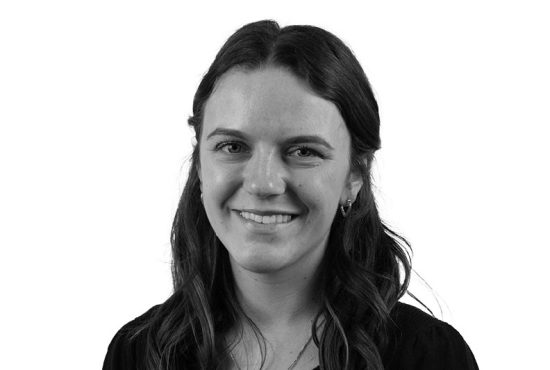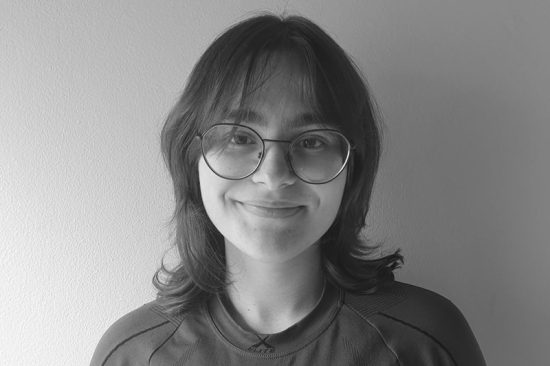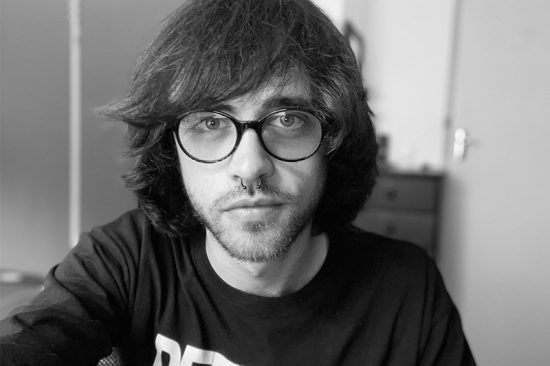
“Communication technology and spreading social platforms have allowed everybody to be a consumer and producer at the same time.”
TPP45S What originally made you want to become a designer and how would you describe your education (in or out of school)?
MARION FINK The beginnings of my studies led me to architecture and law, but I couldn’t get away from the idea of designing in my career. Growing up in Ulm, Germany, my imagination of design was influenced by the Ulm School of Design (Hochschule für Gestaltung Ulm) – it was closed down in 1968 but still boasted an ongoing local and global reputation. Otl Aicher, as one of the leading design figures and teachers in Ulm, was a big inspiration. He represented the attitude that design is a problem-solving-oriented discipline, which must always fulfill a functional dimension in addition to an aesthetic one. Therefore, I chose to study Visual Communication at the University of Design, in Schwäbisch Gmünd – geographically in the middle of nowhere, but methodically and philosophically regarded as the successor of the Ulm School of Design.
After four years of education, I was seeking an urban and cultural contrast and, so, continued my studies at the Royal College of Art, in London. Compared to my basic education, the postgraduate program was a big shift – the designer was no longer just the mediator, but, above all, also the author. The quest for extending and disrupting the tools, intent, context, and role of graphic design was an integral part of my studies. Today, I benefit from both backgrounds and often evaluate how a project deviates from one or the other to calibrate the next effort.
TPP45S What made you become interested in teaching?
MARION FINK Teaching was a coincidence. When offered a position as a part-time lecturer at the Kingston University straight after my master’s degree in 1999, I started to teach in tandem with Ben Duckett out of curiosity and as a possibility to finance our own design practice. Being almost the same age as my students, I lacked teaching experience and, so, focused more on the inquiry than on the advice. I made a virtue of necessity, so to speak. This discourse-based method naturally fosters each student’s individual strengths and talents and goes beyond the mere transfer of knowledge. That’s what I still find teaching interesting today.
TPP45S In which class did you assign the Phaistos Project (program, discipline, level, etc.)?
MARION FINK I assigned the project in my information design class, situated in the 5th semester of the BA program at the Visual Communication Institute, within the Basel School of Design.
TPP45S What was your initial response looking at the Phaistos Disc? Did it raise any questions? Did it inspire pedagogy and preparations for your class?
MARION FINK In recent years, information design has been influenced by big data connected to the question of how to conquer information overload. Data visualization and mapping experienced enormous renaissance but were often valued for their aesthetic instead of their communicative qualities. The Phaistos Disk and its underlying research inspired me to look at information design on a semiotic level, with the focus on the sign as the most basic graphic constituent of any visual information. In the accompanying lecture series, I wanted to sensitize the students to the dialectic between word and image, abstraction and iconicity. Culture and writing historian Antonio Loprieno, for example, has spoken of an ideographic return (2007). He describes the contemporary movement towards the iconization of writing in the age of digitalization – that writing culture, particularly linear-alphabetic writing culture, seems to reflect back on the original medium of its genesis, the image.
TPP45S Could you describe the biggest challenges for your students during the process?
MARION FINK I was surprised that the whole class received the assignment very positively. To structure the 14 weeks of the semester, I defined three separate submissions; an online submission of the digital set of 45 symbols; a submission of silk-screen printed posters; and a submission that could be defined individually. All three submissions were shown within a group exhibition at the Basel School of Design’s Open House, in January 2018. I think the sequence and diversity of submissions was the biggest challenge for the students. However, at the same time, I could see them gaining a wide range of competences: identifying a topic, developing an individual visual language, and finally, transferring this into a meaningful context or application.

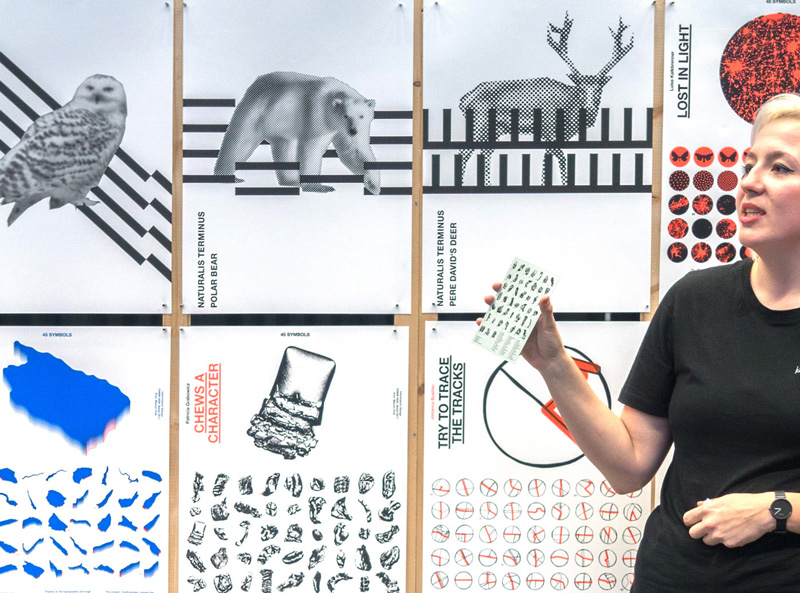
TPP45S What were the most positive and beneficial experiences of your students? Were there teachable moments?
MARION FINK At the beginning of the semester, one of the students had a very impassionate “I-hate-pictograms” attitude and wasn’t motivated at all. But, she managed to overcome her struggle and developed a very surprising sign system, negating iconicity in favor of abstract and indexicalic forms. In the end, her work addressed a broad audience, and was published on the 45 symbols’ globalmurmurs website as well being chosen for this year’s visualizing-knowledge symposium at Aalto University, in Helsinki.
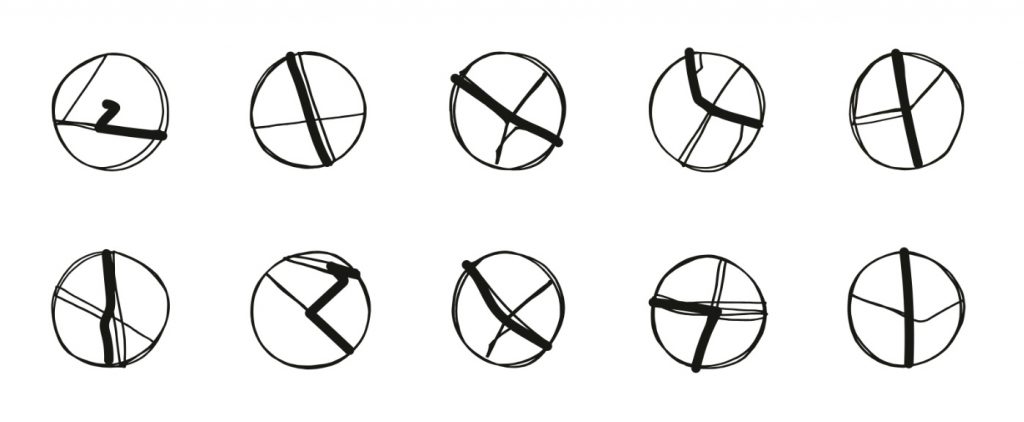
by Johanna Buehler
Although this was an extreme example, I saw every student go through a learning curve within the understanding of signs, pushing their formal and semantic potential beyond the iconic pictograms designed by Otl Aicher.
TPP45S Knowing that your students will be active members of the creative community for the next fifty years, what are the core values, competences, skills or ethics you would like them to build during their undergraduate/graduate studies?
MARION FINK Design is currently facing a paradigm shift: communication technology and spreading social platforms have allowed everybody to be a consumer and producer at the same time. Young designers have to find ways to make a difference to those prosumers. In my opinion, it is crucial to create work that matters and is engaging, rather than just racking up likes and being instagrammable.
TPP45S What are you currently fascinated by? This could be, for example, a book, an article or a designer/artist inspiring your teaching and design practice.
MARION FINK I find such personalities as Erik Kessels inspiring – a Dutch artist, author, curator, designer and co-founder of KesselsKramer. This is, first, because he breaks open the anachronistic thinking of traditional creative occupations and, second, because he questions the usual pursuit of perfection by embracing the art of serendipity and mistakes. One recent example was the Erik Kessels & Friends exhibition at the NRW-Forum, in Düsseldorf: he identified and curated “fabulous failures”, as he calls his collection of amateur photography, and revealed social structures as well as personal narratives. He manages to reduce design to the most minimal gesture – observing and selecting.
Besides that, Five Angels for the Millennium by Bill Viola, which was shown in the Tate in 2001, was one of the most impressive installations I have ever seen.

Professor Marion Fink
Diploma-Designer, Master of Art (RCA, 1971).
Marion Fink is a full-time lecturer at the Visual Communication Institute, within the Basel School of Design at the Academy of Art and Design Basel (HGK Basel) as a department of the University of Applied Sciences Northwestern Switzerland (FHNW). Her creative practice and teaching focuses on typography, editorial design and information design. She is also responsible for the coordination of the bachelor’s program. Within the two master’s programs (Visual Communication an Iconic Research and International Master of Design University of UIC/HGK), she teaches in the field of publication formats, in the context of curatorial practice.
Marion Fink studied from 1994 to 1997 in the Visual Communications department of the University of Design, in Schwäbisch Gmünd, and, from 1997 to 1999, in the department of Visual Communication, Art and Design at the Royal College of Art in London (mainly with Margret Calvert and Lol Sargent). From 1998 to 1999, she was a scholarship holder of the German Academic Exchange Service. Upon graduation, she worked as a designer in London, in such offices as Pentagram and MetaDesign, and as a guest lecturer at Kingston University and the London College of Printing. Afterwards, she worked as an Art Director at Mutabor in Hamburg and at KMS Blackspace in Munich. In 2002 she founded together with Marc Ziegler and Prof. Xuyen Dam the design office MarX, in Munich. In 2004, she was appointed to Basel. In addition to her full-time employment there, she was a lecturer and member of the Masterboard at the Institute Integrative Design/Master Studio of the FHNW, lecturer at the Institute for Aesthetic Practice and Theory at the FHNW and led workshops at the Faculty of Design at the University of Applied Sciences Munich and the Summer Workshop Program of the Institute of Visual Communication at the FHNW. Currently, she works as a lecturer, designer, author and member of international design juries.
Publications:
- Geist und Luxus› Marion Fink, Barbara van der Meulen (Hg.), Basel 2016
- Living Memory. Eine Ausstellung über die Papierfabrik Zwingen› Marion Fink, Barbara van der Meulen (Hg.), Basel 2015
- Informare – Bildmetaphern, Ästhetik und Erkenntnis › in: Ortszeit, Hochschule für Gestaltung und Kunst (Hg.), Basel 2014
Links:
www.publishinginarchitecture.com
www.campusderkuenste.ch/curating-catalogues/8978
www.wemakeit.com/projects/living-memory
www.baseltypografie.ch
www.20plusx.de/2011/index.php/workshops
www.kms-team.com/de/referenzen/pinakotheken-muenchen-0#details
www.shop.schwabe.ch/buecher/buchdetails/basel/geist-und-luxus-27065/?cHash=871a75c3a469c739739192b595034c2a
www.shop.schwabe.ch/buecher/buchdetails/kunst-und-kunstgeschichte/living-memory-25050/?cHash=16822707aa59b27bb281b8ccf095bd27

FHNW Academy of Art and Design
At the FHNW Academy of Art and Design, you can choose from seven bachelor’s and four master’s degree courses in your respective field of study. We pave the way to your individual artistic or design-based authorship and lay the foundations to a successful career.
Design, art, digital and analogue media define our life world evermore. Designers and artists help to shape cultural developments and advance new visions of society. In view of the many challenges we as a society face today, graduates of art and design academies can play a significant role.
Studying at the FHNW Academy of Art and Design will enable you to help shape the future, for instance, by realizing aesthetic experiments that challenge the public’s mode of perception, by redefining user behavior through new artefact designs or by establishing your own start-up company with a dynamic business model.
The Degree Programs
We support you on this venture: seven bachelor’s and four master’s degree courses in art, design, art and design education and research open the door to a wide range of creative activity fields. Apart from a sound training and comprehensive support through lecturers, teachers and external experts, studying at the FHNW Academy of Art and Design provides you with the opportunity of forging networks with researchers from other disciplines and allows you to engage with project partners in concrete assignments.
Campus of the Arts Basel
The Campus of the Arts, in Basel, provides a study location where all the courses and subject fields come together. Here, you have access to your personal workplace and the shared ateliers 365 days a year. In the campus’ immediate vicinity, there are numerous exhibition venues, such as Kunsthaus Basel and Schaulager or HeK (House of Electronic Arts Basel) as well as diverse companies and freelancers engaged in the local culture and creative industries. In other words, it is an ideal environment for successful and stimulating studies and an inspiring exchange of thoughts and ideas.
Institute of Visual Communication
Visual communication is a tool of knowledge generation in its own right.
Visualizations make things perceptible, imaginable and graspable.
Digitalization and the concurrent growth of extensive and widely ramified communication networks have significantly increased the volume of data, signals and images that we are confronted with each day. From photography to typography, from drawings to diagrams, from the interface to coded pictograms, our perception of reality is increasingly defined by visual messages.
This requires a high sensitivity of and a critical approach to visual messages and their communication objectives. Here, Visual Communication has an important role to play since it teaches us how to handle images, pictographs, ideographs and the processing of visual information in a responsible manner.
Links
www.thebaselschoolofdesign.ch
www.fhnw.ch/en/degree-programmes/art-and-design
www.mdesbasel.ch
www.campusderkuenste.ch/swiss-cultural-challenge-kreative-jungunternehmende-ueberzeugen-in-aesthetik-und-oekonomie/10555
